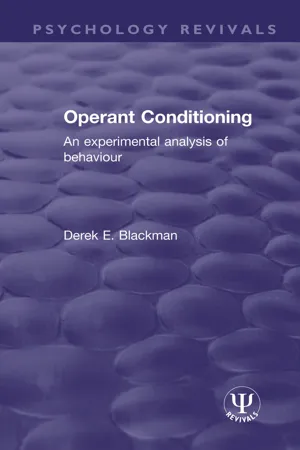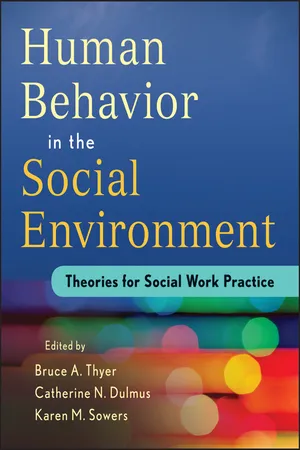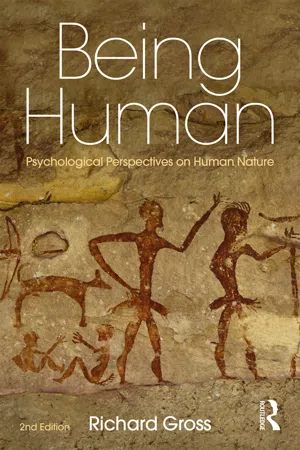Psychology
The Law of Effect
The Law of Effect, proposed by psychologist Edward Thorndike, states that behaviors followed by positive consequences are more likely to be repeated, while behaviors followed by negative consequences are less likely to be repeated. This principle forms the basis of operant conditioning and has been influential in understanding how behaviors are shaped and maintained.
Written by Perlego with AI-assistance
Related key terms
7 Key excerpts on "The Law of Effect"
- eBook - ePub
- John Woollard(Author)
- 2010(Publication Date)
- Routledge(Publisher)
Edward Thorndike summarised his findings in a set of ‘laws’. These are extensive and diverse in the degree of importance and the impact upon pedagogy arising from them. The basis of Thorndike’s approach to problems of behaviour lies in the belief that human behaviour can be analysed and studied in terms of stimulus–response and measures of the strength, endurance and re-establishment of the stimulus–response connection. Learning is the establishment of the bond between stimulus and response, and humans only differ from other animals in their greater capacity to make the connections between their response and the consequences. The first principle he developed suggests those responses to a situation that are closely followed by satisfaction will become firmly attached and therefore more likely to reoccur when the situation is repeated. This is the underpinning thesis of operant conditioning upon which Skinner developed much of his work. Conversely, if the situation is followed by discomfort, the connections to the situation will become weaker, and the behaviour or response is less likely to occur when the situation is repeated. The Law of Effect states that the likely recurrence of a response is generally determined by its consequence or impact upon the individual whether that is rewarding or punishing. A positive consequence strengthens reinforcement, whilst a negative response weakens reinforcement. An act which results in discomfort tends to be disassociated from the situation, so that when the situation recurs, the act will be less likely to recur. The greater the satisfaction or the greater the discomfort experienced, the greater the degree to which the stimulus–response association will be strengthened or weakened.After further research studies Thorndike proposed the truncated law of effect that added the idea that while reward responses always strengthen the bond between a stimulus and a response, the effect of punishment responses is less predictable; sometimes they weaken the association, but sometimes they do not. A principled interpretation, which will be illustrated later, is ‘we reward appropriate behaviour, we ignore inappropriate behaviour’. The degree to which we can ignore some behaviour in the classroom can rely - eBook - ePub
Social Motivation, Justice, and the Moral Emotions
An Attributional Approach
- Bernard Weiner(Author)
- 2006(Publication Date)
- Psychology Press(Publisher)
One of the most studied topics in psychology falls under the joint rubric of reward and punishment. This prevalence can be traced in part to (a) everyday observations that reward and punishment have evident effects on motivation and performance, and (b) the influence of behaviorism in psychology. It was logically reasoned from the behaviorist point of view and experimentally documented that reward increases the likelihood of a response, whereas punishment reduces the probability of a response from reoccurring. These principles or laws found their earliest expression in the writings of Thorndike (1911), who was a student of William James. Based on his observations of animal learning, Thorndike (1911) postulated his influential Law of Effect. The law states that when a stimulus–response sequence is followed by a “satisfying state of affairs,” the strength of that bond increases. On the other hand, when this association is followed by an “annoying state of affairs,” the strength of that bond or linkage is weakened. Thorndike’s Law of Effect captured a “hedonism of the past” in that positive and negative outcomes alter the likelihood of the preceding response, rather than pulling the organism to a desired state or a “hedonism of the future,” as expressed in Expectancy × Value theory.Thorndike’s conclusions are in accord with everyday beliefs and part of “naïve psychology.” If our child engages in a behavior we approve, then he or she is rewarded in the hope that the same behavior will take place in the future. On the other hand, if that child puts his hand in the cookie jar, then a verbal reprimand is expected to inhibit the current transgression and such future actions as well. Later in his career, Thorndike was less certain about the effects of punishment on learning and performance. However, his original statement remained highly cited, particularly among Skinner and his followers and others in the behaviorist camp.It subsequently became apparent, however, that the effects of reward and punishment on learning and motivation are far more complex than recognized by behaviorists. Attribution theory has been among the conceptions illuminating subtleties regarding the consequences of reward and punishment. In this context, I examine three research directions applying the attribution theory of social motivation and social justice to the effects of reward and punishment. These three pursuits include:1. Investigations documenting reward may decrease, and punishment increase, motivation to engage in achievement-related tasks, with the augmentation not due to the goal of avoiding further punishment. This contradicts the position stated by Thorndike. Reward and punishment following success and failure have unexpected implications for perceived causality that mediate the reversed effects. - eBook - ePub
Great Ideas in Psychology
A Cultural and Historical Introduction
- Fathali M. Moghaddam(Author)
- 2013(Publication Date)
- Oneworld Publications(Publisher)
Two sets of experiments conducted before Watson’s 1913 manifesto came to fundamentally influence the new school of behaviorism. The first was conducted by Thorndike in the late 1890s as part of his doctoral research and involved training cats to escape from a “puzzle box.” Thorndike made a number of puzzle boxes, which required a hungry cat placed inside to break out by pushing a latch or some other similar device. The main motivation for the hungry cat to break free was to eat the food that had been placed within its view outside the box. In the initial period after being placed inside the box, the cats would typically scramble about frantically. After some time, they would accidentally hit the latch that opened the box and then spring to freedom and food. In subsequent trials, there was a gradual improvement in performance, so that eventually the hungry cat would quickly take the correct action to open the puzzle box.On the basis of his experiments, Thorndike proposed the law of effect , which postulates that the likelihood of a behavior being repeated depends on its outcome: behavior with positive outcome is more likely to be repeated, whereas behavior with negative outcome is less likely to be repeated. He also proposed the law of exercise , which simply put states that the more often an association is strengthened, the stronger it will become. In traditional accounts of Thorndike’s research, the implication is that his major contribution is The Law of Effect, and the law of exercise is sometimes also highlighted as important. But neither of these laws originates with Thorndike. Less formal versions of both of these laws have been around for about twenty-five centuries. Thorndike’s contribution is more the empirical justification he put forward for an exclusive focus on observable behavior.Through repeated trials testing animals under controlled conditions, Thorndike concluded that the learning exhibited by the cats could be explained without any reference to consciousness, images, or thought. The animal did not suddenly gain insight into the problem and see the solution. If that had been the case, the learning curve would have shown a sudden shift (reflecting a “Eureka!” experience), whereas it showed a gradual slope, suggesting an incremental strengthening of an association between stimuli and response. Rather than try to imagine what might be going on in a cat’s hypothetical mind, it was far better for researchers to study behavior objectively from the outside. This laid the foundation for the behaviorist movement. - eBook - ePub
Operant Conditioning
An Experimental Analysis of Behaviour
- Derek E. Blackman(Author)
- 2017(Publication Date)
- Routledge(Publisher)
The attitudes of society in general to punishment techniques have been closely mirrored in the development of psychological theory. For example, Thorndike, who was one of the earliest researchers to investigate learning behaviour systematically (and from whom the phrase 'trial-and-error learning' may be traced), at first adopted a view of punishment much in accord with a 'common-sense' outlook. He suggested (e.g., 1913) that both rewards and punishments have simple effects: behaviour was said to be strengthened if followed by a 'satisfying' state of affairs, but weakened if followed by an 'annoying' state of affairs. However, Thorndike abandoned this balanced 'Law of Effect', when he subsequently discovered that punishment did not always have a clear-cut effect (e.g., 1932); he therefore concentrated his theories on a truncated law of effect which laid stress on the efficacy of satisfying states of affairs to modify behaviour. Since that time, further inconsistencies in the effects of punishment have been revealed (some of which will be reviewed later), and some writers of textbooks in psychology have largely avoided discussing this important problem, or have contented themselves with mysterious comments about the complexities, or even the paradoxes, of punishment procedures.There are three separate concepts involved in a common definition of punishment: a reduction in the strength or frequency of behaviour which is followed by an unpleasant stimulus. In this discussion, the last of these three will be accepted as fundamental for the moment; in other words, the effects of noxious or aversive stimuli will be examined, without any determined attempt to define exactly what a noxious stimulus is (for this will be considered later). In the experiments to be reviewed, the punishing stimulus is invariably one which is readily interpretable as unpleasant, often taking the form of a brief electric shock. Shock is, of course, an 'unnatural' stimulus for most animals, but it has the advantage of being readily adjusted by the experimenter in terms of its intensity and its duration, and it is therefore used as a model of aversive stimuli in the same way that food is used as a model of pleasant stimuli. However, the other two concepts in the common definition of punishment need careful consideration, for the idea that punishment reduces behaviour has been challenged, as has the assumption that punishment is essentially the association of a response - eBook - ePub
Learning & Behavior
Eighth Edition
- James E. Mazur(Author)
- 2016(Publication Date)
- Routledge(Publisher)
Figure 5.2 The number of seconds required by one cat to escape from a simple puzzle box on 24 consecutive trials. (From Thorndike, 1898)The application of The Law of Effect to the puzzle-box experiments is straightforward: Certain behaviors, those that opened the door, were closely followed by a satisfying state of affairs (escape and food), so when the animal was returned to the same situation it was more likely to produce those behaviors than it had been at first. In modern psychology, the phrase “satisfying state of affairs” has been replaced by the term reinforcer , but The Law of Effect (or the principle of positive reinforcement ) remains as one of the most important concepts of learning theory.Guthrie and Horton: Evidence for a Mechanical Strengthening Process
Two researchers who followed Thorndike, E. R. Guthrie and G. P. Horton (1946), provided more convincing evidence that the learning that took place in the puzzle box involved the strengthening of whatever behavior happened to be followed by escape and food. They placed cats in a puzzle box with a simple solution: A pole in the center of the chamber had only to be tipped in any direction to open the door. A camera outside the chamber photographed the cat at the same instant that the door swung open, thereby providing a permanent record of exactly how the cat had performed the effective response on each trial. The photographs revealed that after a few trials, each cat settled on a particular method of manipulating the pole that was quite consistent from trial to trial. However, different cats developed different styles for moving the pole; for example, one cat would always push the pole with its left forepaw, another would always bite the pole, and another would lie down next to the pole and roll over into it (Figure 5.3 ).In summary, Guthrie and Horton found that after their cats mastered the task, there was relatively little variability from trial to trial for a given cat, but there was considerable variability from one cat to another. These results provide evidence for a particular version of The Law of Effect that Brown and Herrnstein (1975) called the stop-action principle - eBook - ePub
Human Behavior in the Social Environment
Theories for Social Work Practice
- Bruce A. Thyer, Catherine N. Dulmus, Karen M. Sowers(Authors)
- 2012(Publication Date)
- Wiley(Publisher)
Chapter 3 Operant Learning Theory Stephen E. WongWhat formative experiences in the social and physical world are overlooked while trying to explain human behavior primarily based on internal psychological and neurological processes?Historical and Conceptual Origins
The earliest studies of operant learning can be traced back to the research of psychologist E. L. Thorndike with cats in puzzle boxes (Kimble, 1961). In Thorndike's experiments, hungry cats had to escape from boxes fastened shut in different ways to obtain food. Thorndike observed that after being placed in the boxes, the cats engaged in various behaviors such as pacing, visually exploring, and scratching at the walls. The animals performed these responses until they accidentally pressed the latch, pulled the string, or did something else that opened the box. On successive trials, the cats spent more time examining and scratching at the latch or the string, while the other responses gradually dropped out. Finally, the animal would perform the correct behavior as soon as it was placed in the box. Thorndike explained the learning of this new behavior with his “law of effect”: In situations where responses are followed by events that give satisfaction, those responses become associated with and are more likely to recur in that situation.B. F. Skinner, another American psychologist, greatly refined the experimental apparatus that permitted the study and conceptualization of operant learning. The “Skinner Box,” a chamber with a lever that could be programmed to deliver food following lever presses, provided several improvements over Thorndike's puzzle boxes. One advantage was that the relationship between lever presses and food delivery was arbitrary and could be readily manipulated by the experimenter. This allowed for the study of a wide range of variables, such as the ratio of responses to food deliveries, the time interval between responses that would produce food, and variations in stimuli that signaled the opportunity to earn food - eBook - ePub
Being Human
Psychological Perspectives on Human Nature
- Richard Gross(Author)
- 2019(Publication Date)
- Routledge(Publisher)
Functionalism was the first recognised school of American psychology and this largely reflects the influence of evolutionary theory and a practical (‘pioneering’) spirit. (William James, one of the two great pioneers of ‘modern’ (experimental) psychology, is usually described as a functionalist.)Thorndike and The Law of EffectOne of the pioneers of functionalism, Edward Thorndike, is also regarded as a pioneering associationist ; arguably, this makes his impact on behaviourism, specifically Skinner’s work on operant conditioning, on a par with Pavlov’s.Thorndike saw psychology as primarily the study of stimulus-response connections (or bonds), but his understanding of ‘stimulus’ and ‘response’ was far broader than how the terms are commonly understood – and certainly far broader than the discrete ‘events’ studied by Pavlov and on which Watson’s behaviourism was based (see below).Watson and classical conditioning Conditioned emotional reactionsBox 6.1 Thorndike’s (1898) Law of Effect• Thorndike was impressed by animals’ gradual learning of the correct response (e.g. with cats, operating the latch which would automatically release the flap so they could escape) and gradual elimination of incorrect ones. Accidental (i.e. chance/random) success played a large part in this process, which has come to be called trial-and-error learning.• What was being learned was a connection between the stimulus (the manipulative components of the box) and the response (the behaviour that resulted in escape). Further, the S–R connection is ‘stamped in’ when pleasure results (e.g. a piece of fish waiting for the cat outside the box) and ‘stamped out’ when it doesn’t.• This is the law of effect and represents a crucial way of distinguishing between classical and operant conditioning, which Skinner was to do 40 years later (see text below).Watson (see Figure 6.2 ) was the first psychologist to apply Pavlovian/classical conditioning to human behaviour, both as an explanatory
Index pages curate the most relevant extracts from our library of academic textbooks. They’ve been created using an in-house natural language model (NLM), each adding context and meaning to key research topics.






